What Are Fiber Optics & How Do They Work?
Last Updated on
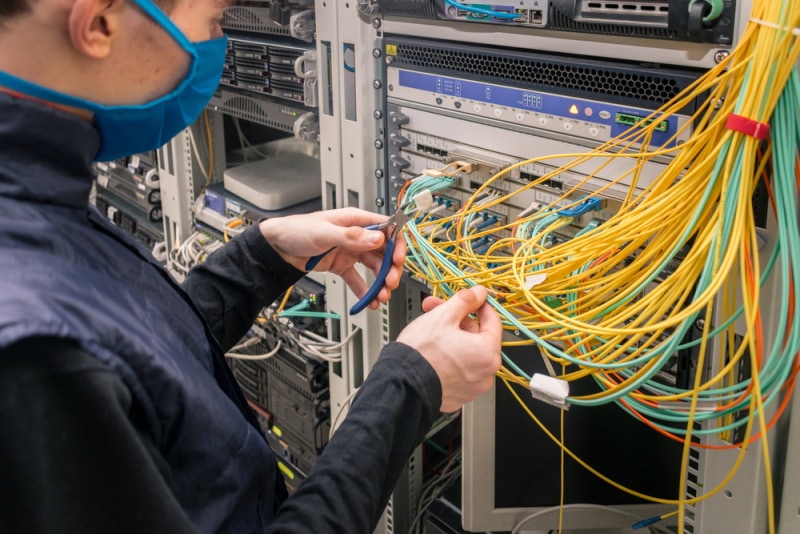
Fiber optics are long, thin strands of very pure glass about the thickness of human hair. They come in bundles called optical cables and transmit light signals over long distances.
Fiber optics work by transmitting light through the fibers. The light is bounced off the walls of the fiber at a very high speed. Thus, it causes the light to travel in a zig-zag pattern.
The light is then transmitted to an optical receiver, which converts the light into an electrical signal. The electrical signal can carry information, such as voice or data. Here’s an overview of the advantages, disadvantages, and uses of fiber optics.

How Does It Work?
The working of fiber optics depends on the repeated bouncing of light on the walls of the cable. It happens because the fiber’s core comprises a material with a different refractive index than its cladding.
The difference in the refractive index creates a “critical angle” beyond which light waves reflect off the cladding. As long as the angle of the incoming light is less than the critical angle, the waves will pass through the core. Then, they will bounce around its walls.
The process continues until the waves reach the other end of the fiber, where they can be transmitted to another device. Fiber optics work because of a process called total internal reflection.
It helps to think of a fiber optic cable as a long pipe filled with water. If you shine a light source into one end of the pipe, the light will bounce off the walls and travel to the other end. Now imagine that the pipe is filled with honey instead of water. Honey has a higher refractive index than water, so the light waves will bend when they enter the honey from the air.
The angle at which the waves enter the honey will determine how much they bend. If the angle is too shallow, the waves will reflect off the surface of the honey. Then, they will travel back out of the pipe. But if the angle is just right, the waves will bounce off the honey and travel to the other end of the pipe. That’s what happens with fiber optics.
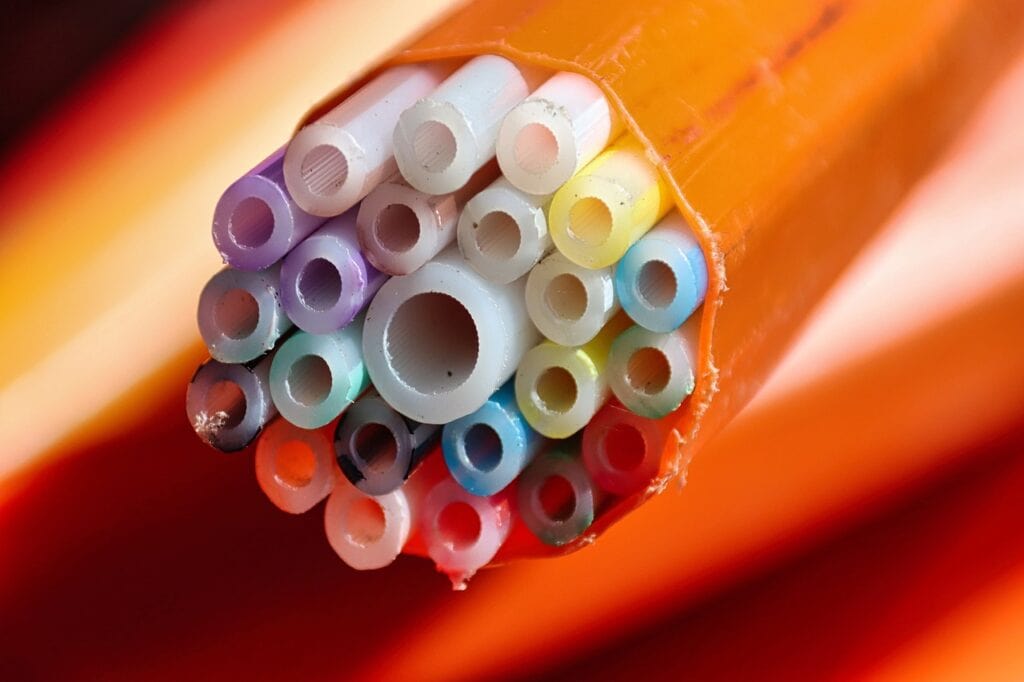
Construction of Fiber Optics
The construction of a fiber optics cable also aids its function. It has two main parts: the cladding and the core. The core forms the innermost part of the fiber and is usually made of glass. It has a refractive index that is just slightly higher than the cladding.
Meanwhile, the cladding is a layer of material that surrounds the core. It helps keep light signals in the core. Since it is made of a different glass than the core, it can help contain the light signals.
What Are the Types of Fiber Optics Cables?
There are many types of fiber optics cables. They all have different constructions and applications.
Single Mode Fiber
In fiber optics, the mode is the path that light travels down the fiber. Single-mode fiber has a very thin core, usually around 8–10 microns in diameter.
These fibers are the simplest types of fiber optics cables. Their applications include:
- Telephone Lines
- CATV Networks
- Internet and Data Communication
- Local Area Networks (LANs)
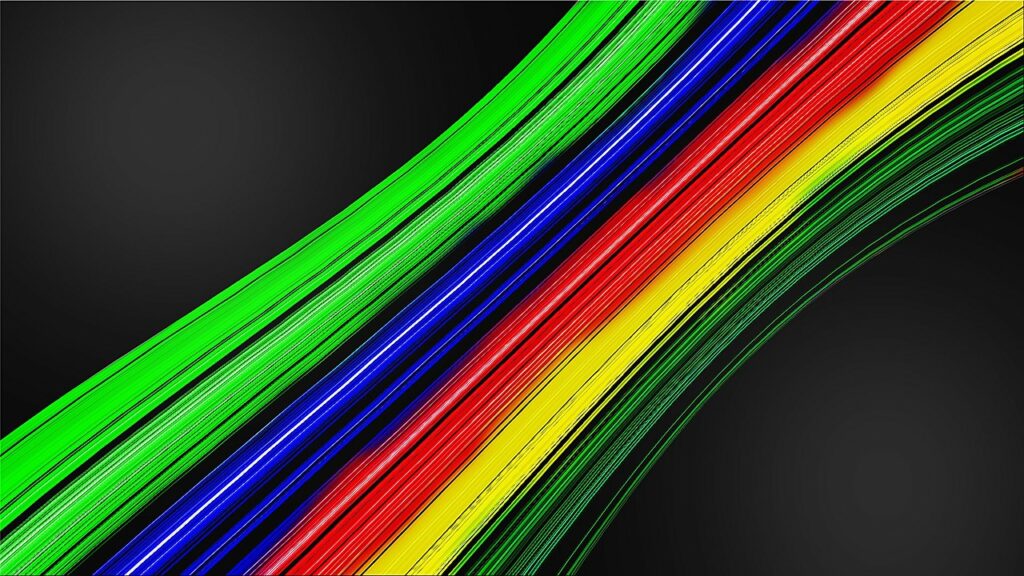
Multi-Mode Fiber
Multi-mode fiber is an optical fiber primarily used for communication over short distances, such as within a building or campus. The cores of these fibers are larger than those of single-mode fibers, usually 50–100 microns in diameter.
Multi-mode fiber optics cables can carry many modes. They are about ten times larger than their single-mode counterparts.
In these cables, light can travel by following different paths. Simply put, there are more modes for the light to take. Every multimode fiber has an optical multimode number or OM. There are four OMs: OM1, OM2, OM3, and OM4.
The higher the number, the more modes each fiber can carry. The most common type of multi-mode fiber is OM1. Applications for multi-mode fiber optics cables include:
- Short Distance Data Transmission
- Fiber to the Home (FTTH)
- Fiber to the Curb (FTTC)
- Fiber to the Premises (FTTP)
Plenum
Plenum cables run in plenum spaces. These spaces are areas of a building used for air circulation. For example, the space between the ceilings and the floors is a plenum space. Because these spaces facilitate air circulation, they must be fire-resistant.
Plenum cables are also fire-resistant. As a result, they comprise materials that do not release toxic fumes when they burn.
Teflon is commonly used in the construction of plenum cables. It does not release toxins upon burning, making it ideal for use in plenum spaces.

Duplex Optical Fibers
A duplex consists of two single fibers joined together. The benefit of using a duplex over two single fibers is that it conserves space.
It also allows for bidirectional data transmission. It means that data can be transmitted in both directions simultaneously.
Duplex optical fibers have applications that require high bandwidth and data rates, such as:
- CATV Networks
- Fiber Optic Data Transmission
- Telephone Lines
- Local Area Networks (LANs)
Where Is It Used?
Fiber optics have a wide array of applications. You will find them in almost every industry, from medical to telecommunications. Here are some uses of fiber optics.
Telecommunications
In the telecom sector, fiber optics are used for long-distance phone calls and the internet. They are also used in cable TV.
In fiber optics telecommunication, the pulse of infrared light transmits information from one place to another. The light is a carrier wave that carries information.
The vast speed improvement is the main benefit of using fiber optics over electrical cables. Unfortunately, the speed of electricity limits the efficiency of electrical wires. Plus, there’s electromagnetic interference that can garble the signal.
Fiber optics are not affected by this interference because they use light, which travels much faster than electricity.
Another benefit of fiber optics is that they can carry much more information than electrical cables. For example, they carry video, voice, and telemetry over long distances.
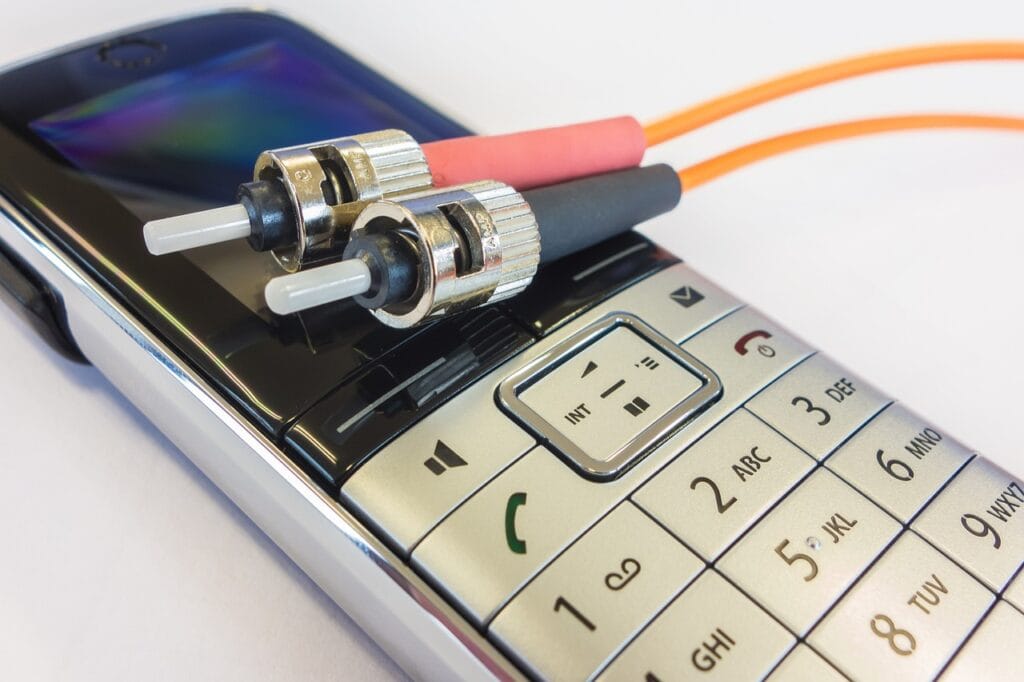
Medicine and Surgery
Endoscopes are tools that help doctors see inside the body. They have a tiny camera and light at the end of a long, flexible tube. The tube is inserted through a small incision or natural opening.
Fiber optics are used in endoscopes to provide lighting and transmit images from the camera to a monitor. As a result, the doctor can see inside the body without making a large incision.
A gastroscope is an endoscope used to examine the inside of the stomach. It uses thick fiber optic cables to transmit light to the patient’s abdomen.
When a lamp shines light into the cable, it transmits to the inside of the patient’s body. The light reflects off the stomach’s walls and enters the lens in the cable.
It then travels back to the eyepiece that the doctor is viewing through. All endoscopes work in the same way. However, they may help view different body parts.
Mechanical Inspections
Fiber optic cables also help with mechanical inspections. For example, they are used to inspect pipelines, aircraft engines, and welds. They are common in automotive inspection systems. In these systems, a laser inspects the surface of a car for defects. The light reflecting off the surface goes through a fiber optic cable to a camera. The defects show up as dark spots on the camera. It helps inspectors find problems before the car goes to the customer.
An example of a tool that uses fiber optics is a fiberscope. It is a small, portable device used to inspect small areas. It helps you see inside hard-to-reach places. For example, airplane engines use it to inspect turbine blades for cracks. The fiberscope has a tiny camera and light at the end of a flexible fiber optic cable. The cable goes into the engine through a small hole. The image is transmitted to a monitor so the mechanic can see if there are any cracks.
Cable Television
Have you ever wondered how your TV cable works? It uses fiber optics! The cable company sends a signal to your TV through a fiber optic cable. The signal is then converted into an electrical signal and sent to your TV. That’s how you can watch your favorite shows.
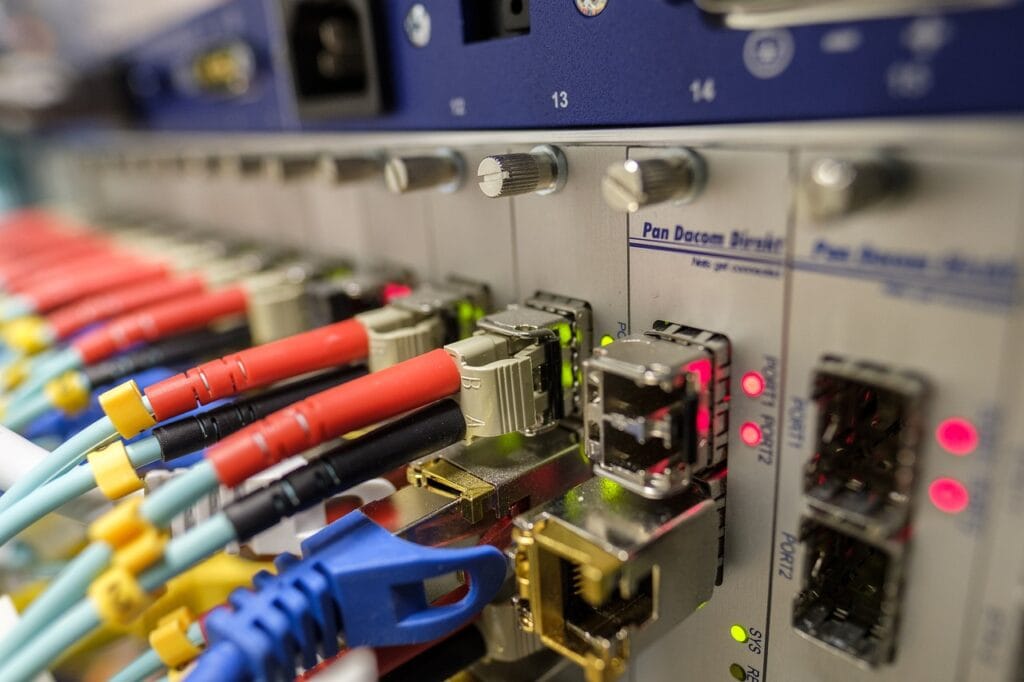
Computer Networking
The world has become a global village, and fiber optics have made it possible. Fiber optics in computer networking transmit data over long distances.
They are also helpful in creating local area networks (LANs), which are networks that cover a small area, like a school or office. In data centers, they help connect servers to storage devices.
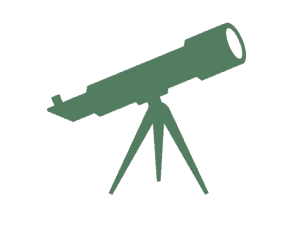
Advantages of Fiber Optics
Fiber optics have several advantages over other types of communication media. Here are the most notable ones:
Immune to Electromagnetic Interference
Electromagnetic interference is a big problem with copper wires. Electrical fields can disrupt the signal traveling through the wire, causing data loss and connection problems.
Because fiber optic cables are made of glass or plastic, they are not affected by electromagnetic fields. Therefore, it makes them ideal for use in areas with a lot of electrical activity, such as near power lines or buildings with electronic equipment.
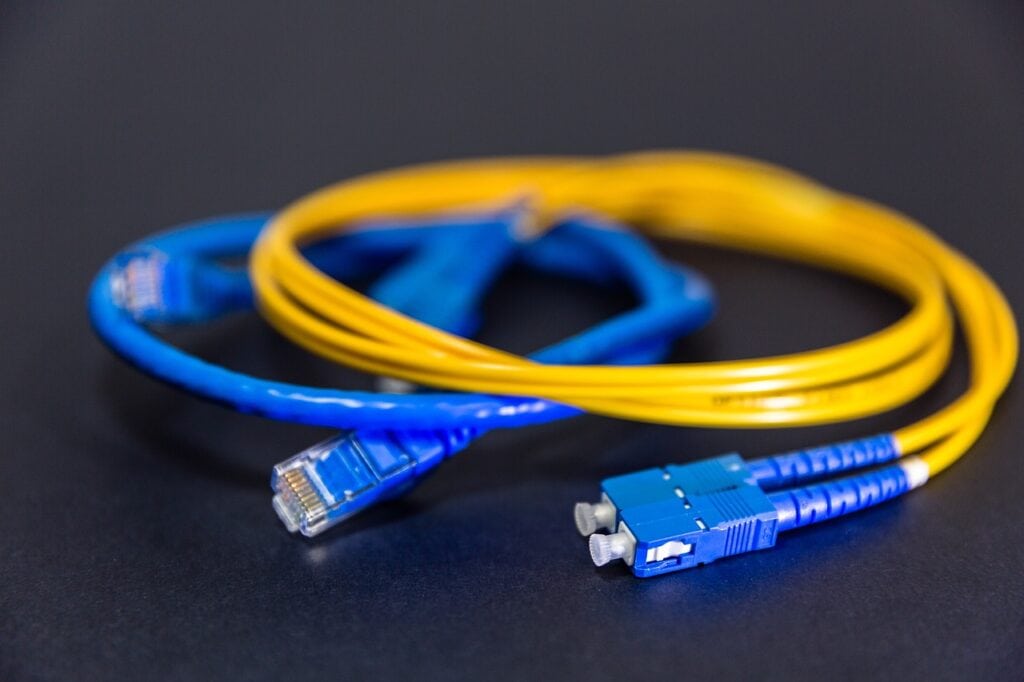
Less Loss of Signal Strength
Fiber optics have less loss of signal strength than other types of cables because the light signals travel through the tiny core of the fiber. Thus, there’s little contact with the material around it.
It means that fiber optic cables can carry signals much farther than other types of cables before the signal needs to be amplified. That’s the reason for most of their applications.
Stronger Security
Fiber optic cables are difficult to tap into because they are so thin. It would be hard to splice into a fiber optic cable without anyone noticing.
On the other hand, it’s relatively easy to tap into a copper wire. All someone needs is a sharp knife and some time. That makes fiber optics much more secure than other types of cables.
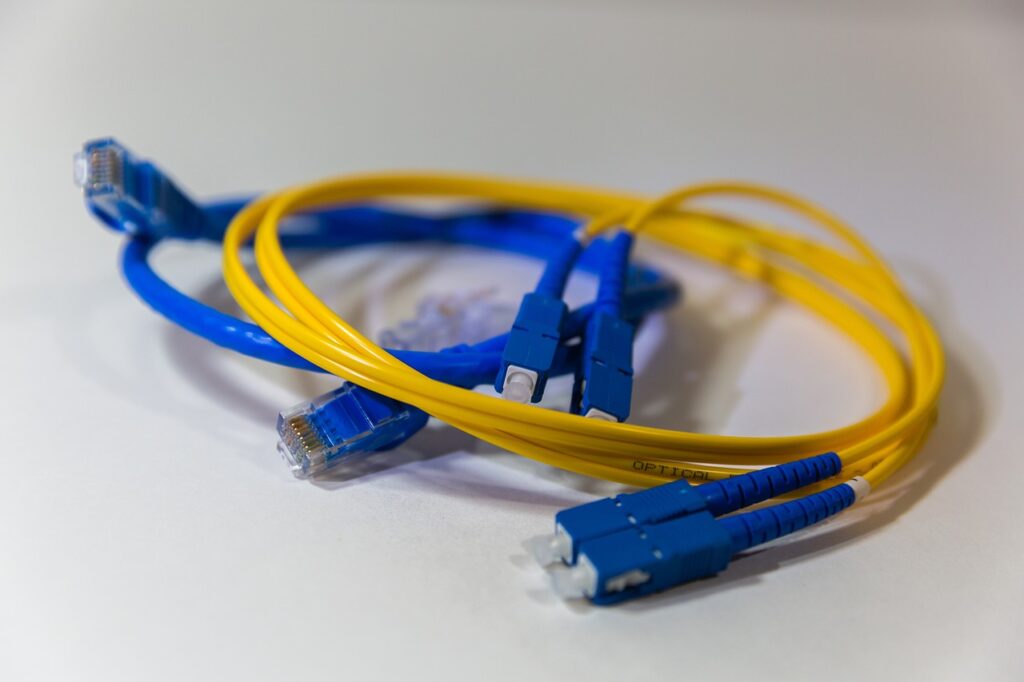
Capacity for Much More Data
Fiber optics can carry much more data than other cables because they use light signals instead of electrical signals. With current technology, a single fiber optic cable can carry data up to 800 gigabytes per second. Therefore, fiber optics are preferred for high bandwidth applications, such as data centers and long-distance telephone calls.

Disadvantages of Fiber Optics
Despite their advantages, fiber optics also have some shortcomings. Here are some of them.
High Initial Costs
Fiber optic cables and equipment are expensive. Therefore, the initial cost of installing a fiber optic network is high. However, the long-term costs are lower because fiber optics are more reliable and have fewer maintenance costs.
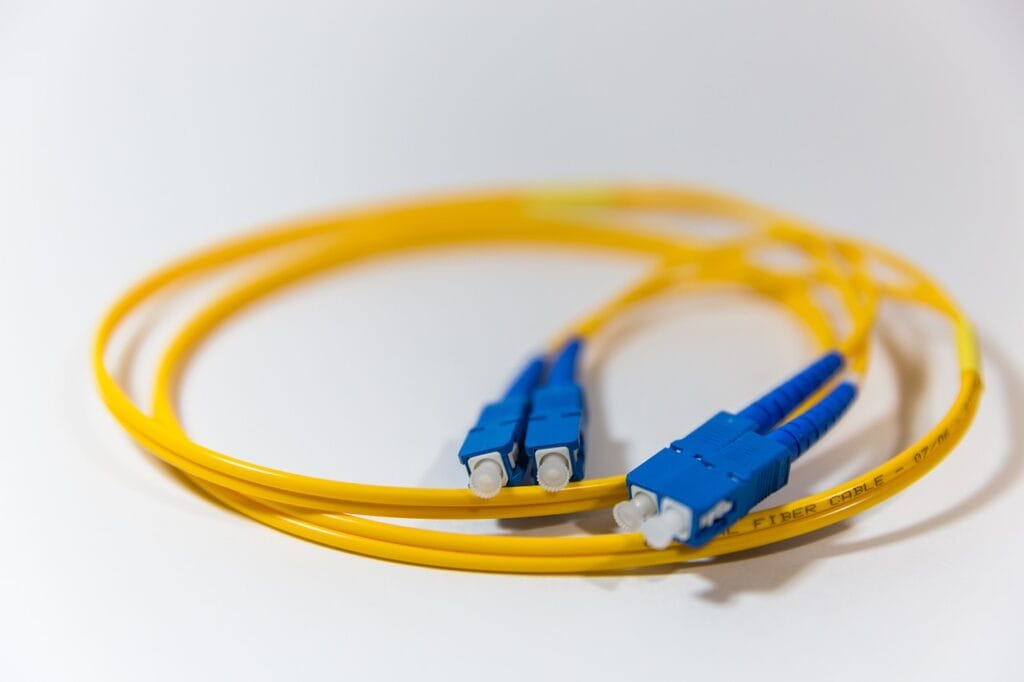
Fragile
Fiber optic cables have a glass or plastic build, which makes them fragile. They can be easily damaged by water, wind, or ice.
Difficult to Install
Fiber optic cables are difficult to install because they are so thin. They require special equipment and trained technicians.

Frequently Asked Questions (FAQ)
How Many Wires Are Present in a Fiber Optic Cable?
Modern cables can have nearly 800 different fibers in a single cable. In single-mode fiber optics, 864-count fibers are the most common. They have 36 ribbons, and each ribbon has 24 fiber strands.
How Fast Can Data Travel Through Fiber Optics?
Most fiber optics have a speed of 1,000 Mbps. But experts say that a fiber optic strand can theoretically transmit up to 44 Terabytes per second.
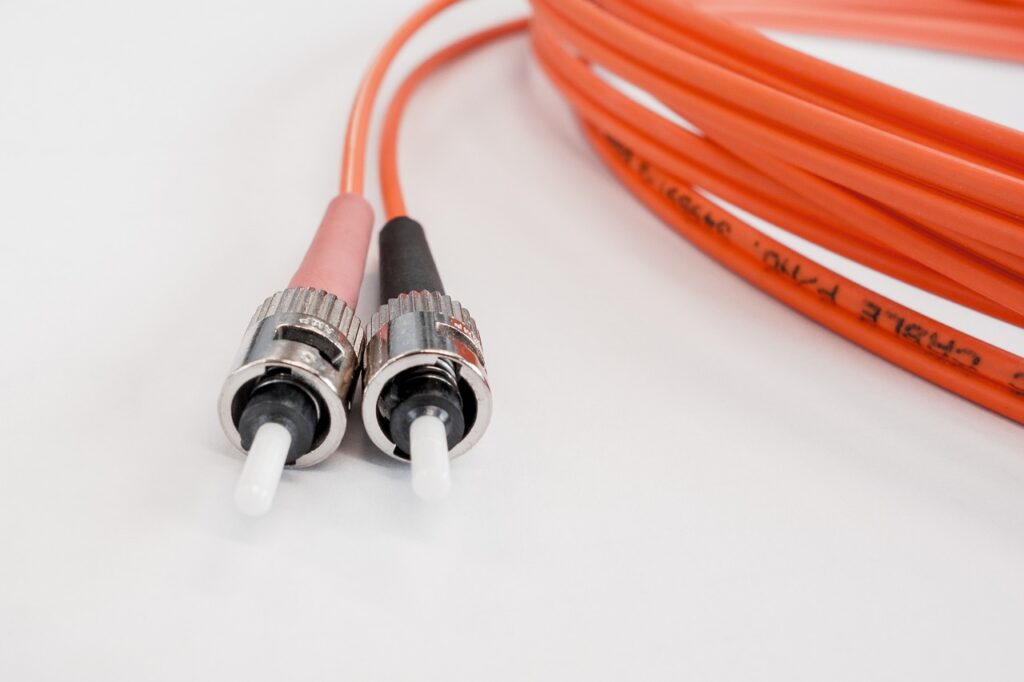
Do Fiber Optics Require More Power?
Fiber optics use less power than copper cables. In long-haul applications, fiber optics can transmit data across hundreds of miles with only a few watts of power.
How Are Fiber Optics Made?
Fiber optics are made of glass or plastic. The fiber’s core is usually made of pure silica, while the cladding contains silica with a lower index of refraction. Finally, the coating is applied to protect the fiber from damage.

Final Thoughts
It wouldn’t be wrong to say that fiber optics has transformed the telecommunication industry. For example, it has made long-distance phone calls clearer and internet speeds much faster.
Plus, fiber optics has surgery, automotive engineering, and mechanical inspection applications. Overall, fiber optics has made a significant impact and will likely continue to do so for many years to come.
Featured Image Credit: Maximumm, Shutterstock
About the Author Robert Sparks
Robert’s obsession with all things optical started early in life, when his optician father would bring home prototypes for Robert to play with. Nowadays, Robert is dedicated to helping others find the right optics for their needs. His hobbies include astronomy, astrophysics, and model building. Originally from Newark, NJ, he resides in Santa Fe, New Mexico, where the nighttime skies are filled with glittering stars.
Related Articles:
Binocular Magnification Chart: Numbers & Distances Compared
How to Clean a Refractor Telescope: Step-by-Step Guide
How to Clean a Telescope Eyepiece: Step-by-Step Guide
How to Clean a Rifle Scope: 8 Expert Tips
Monocular vs Telescope: Differences Explained (With Pictures)
What Is a Monocular Used For? 8 Common Functions
How to Clean a Telescope Mirror: 8 Expert Tips
Brightfield vs Phase Contrast Microscopy: The Differences Explained
